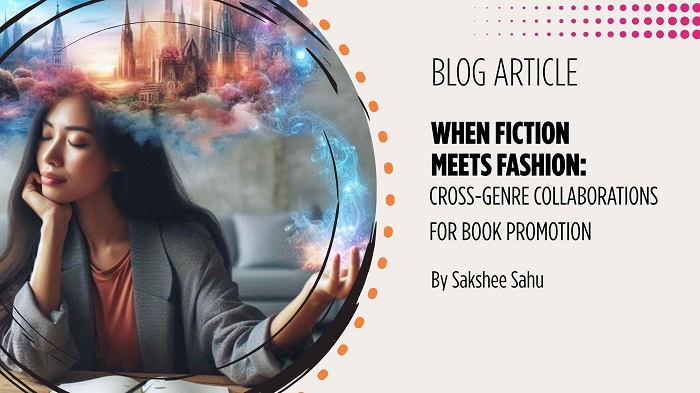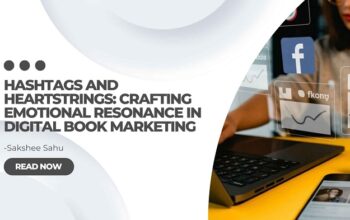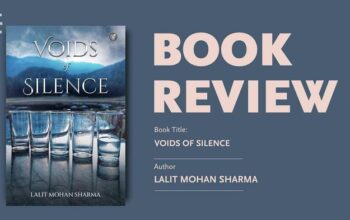In today’s crowded literary landscape, a great story alone is no longer enough to grab readers’ attention. Authors, especially in the independent and creative publishing space, are now turning to unexpected allies, designers, illustrators, and lifestyle brands, to breathe new life into their book marketing. The result? A powerful blend of storytelling and style that transforms books from mere reading material into living, wearable, and shareable experiences. The meeting point of fiction and fashion isn’t just aesthetic, it’s strategic, cultural, and deeply emotional.
Beyond the Page: Turning Books into Brand Experiences
Traditionally, marketing a book meant relying on reviews, bookstore displays, or digital ads. But the rise of visual storytelling on social media has changed everything. Readers today don’t just read books, they experience them. And when an author collaborates with a fashion designer or illustrator, that experience becomes tangible.
Imagine a fantasy author teaming up with a designer to create a clothing line inspired by the mythical world of their story. Each fabric pattern, color, or silhouette could represent a character, a kingdom, or a theme. Suddenly, the book is not just a text, it’s a lifestyle statement. Fans wear their love for the story, literally, making every outfit a conversation starter. This sensory connection deepens emotional engagement far beyond what traditional advertising can achieve.
New Blog: https://www.theliteraturetimes.com/how-to-create-a-book-launch-that-feels-like-an-event-not-a-task/
Such collaborations work because they tap into the growing desire for belonging. Readers don’t just want to consume stories; they want to identify with them. When a reader wears a jacket inspired by their favorite protagonist or carries a tote printed with a book quote, it’s an act of personal expression. Fiction meets fashion in that moment of identity. The book becomes more than literature, it becomes a brand.
The Visual Language of Storytelling in the Age of Aesthetics
In the digital era, aesthetics are everything. Instagram feeds, Pinterest boards, and TikTok videos thrive on visual cohesion, and books are being pulled into this universe of curated storytelling. Collaborating with illustrators, photographers, or fashion creators allows authors to expand their book’s visual language beyond its cover.
Take the example of book-inspired fashion photoshoots, where models pose in costumes that echo the tone and mood of the novel. A romance author might collaborate with a fashion stylist to recreate key moments from the book, using clothing, lighting, and setting to capture the emotion of the story. A dystopian writer might work with a streetwear brand to design a limited-edition hoodie featuring the book’s symbols or slogans. Each image becomes a portal into the book’s world, and each wearable design becomes a collectible artifact.
These collaborations are not merely decorative; they extend the storytelling canvas. The book’s world starts to exist outside its pages, making it more discoverable, especially among younger readers who are drawn to visual platforms. A reel showing the “making of” a character-inspired outfit or a behind-the-scenes clip of a designer interpreting the story visually can go viral, creating intrigue around the book before anyone has even read it.
Fashion becomes the modern dust jacket, a new way to package and present narrative identity. And when done right, it creates a multi-sensory memory for the audience. Readers no longer remember just what they read, but also what they saw, felt, and wore.
Collaboration as a Cultural Conversation
Cross-genre collaborations between authors and fashion or design brands are more than marketing tactics, they are cultural statements. They bridge two creative industries that share one core principle: storytelling. Both literature and fashion explore identity, emotion, and transformation. When they meet, they create powerful dialogues about society, aesthetics, and meaning.
Consider how a book dealing with themes like empowerment, sustainability, or rebellion could find natural synergy with ethical fashion labels or independent designers. A novel about climate change could collaborate with an eco-friendly clothing brand, where each purchase supports environmental initiatives. A feminist anthology could inspire a jewelry collection celebrating strength and individuality. These partnerships turn books into agents of change, giving readers the chance to participate in the story’s values through tangible action.
Moreover, these collaborations open new audiences for authors. Readers who discover a story through a fashion line might not have picked up the book otherwise. Likewise, fashion consumers are introduced to literary narratives that align with their ideals. This cross-pollination of audiences creates a vibrant ecosystem where art, commerce, and culture meet.
Authors who embrace this approach aren’t just marketing their books, they’re expanding the language of literature itself. They’re proving that storytelling is not confined to pages; it can live in fabric, design, and visual emotion. Each collaboration becomes a celebration of creativity’s interconnectedness, a reminder that imagination has no boundaries.
A New Chapter in Literary Marketing
The intersection of fiction and fashion signals a new chapter in how stories are shared and remembered. It redefines the book not as a static product, but as a dynamic cultural artifact that adapts to how audiences experience art today. In an era where attention is fleeting, these collaborations offer something lasting, a fusion of visual and emotional storytelling that makes readers feel the story before they even open the first page.
As literature continues to evolve, so must the way it’s presented to the world. The next bestseller might not just be read, it might be worn, photographed, and lived. And that, perhaps, is the most beautiful story of all, when fiction walks the runway of imagination.



